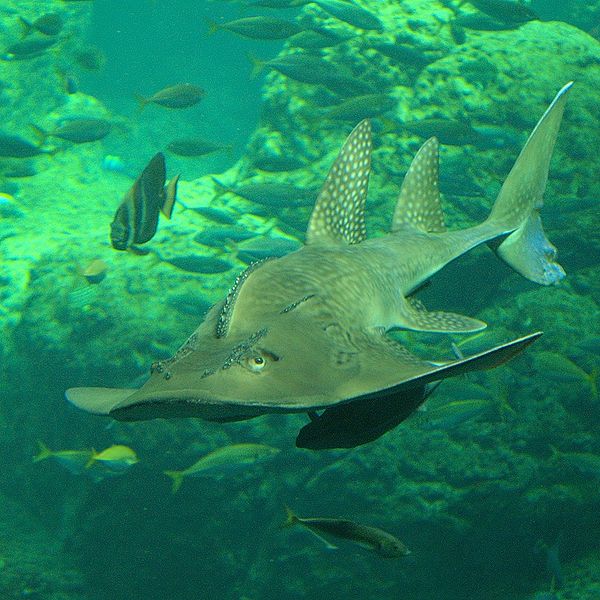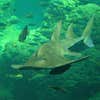Happy Shark Week! In honor of the One True American Holiday (all other holidays are less true, due to lower shark content), I spent about an hour reading about sharks on Wikipedia. Important findings from a solid morning’s research: sharks often have weird names. For example: the birdbeak dogfish. That’s a real animal! Ditto the flaccid catshark and, perhaps weirdest of all, the porbeagle, which doesn’t sound like a fish at all. Click through for more.
Click to launch the gallery.
This article originally appeared on PopularScience.com August 14, 2012.
Dumb Gulper Shark
The dumb gulper shark (Centrophorus harrissoni), also known as the dumb shark or Harrison’s dogfish, is an extremely rare deepwater shark native to the areas around Australia and New Zealand. It’s wildly overfished for its meat and its liver oil and its population may have decreased by 99% since the 1970s.
Birdbeak Dogfish
The birdbeak dogfish, Deania calcea, lives in both the Atlantic and Pacific Oceans, mostly in the seas around Japan, southern Australia, New Zealand, and western Africa. It is listed as being harmless to humans.
Tasseled Wobbegong
Wobbegongs can also be called carpet sharks. But why would you ever call something a carpet shark when you’ve been given the opportunity to say “wobbegong”? (The word means “shaggy beard” in an Aboriginal Australian language.) Related: wobbegongs are often eaten in Australia. If you order a fish and chips there, there’s a pretty good chance you’re actually having a wobbegong and chips.
Sickle Fin Lemon Shark
And the award for the worst ratio of scariness of shark to prettiness of name goes to…the sickle fin lemon shark, whose name sounds like a Harry Potter candy but who looks like he wants to eat your face. Negaprion acutidens can reach sizes of 12 feet long and occasionally attacks humans, especially if provoked.
Cookiecutter Shark
The cookiecutter shark is not named for its ordinaryness, but for something much creepier: it has a peculiar circular mouth and is known for taking plug-shaped bits out of other animals, including fish and marine mammals. It’s very common and very weird.
Starry Smooth-Hound
Lesson from this bit of research: sharks are often equated with dogs. The starry smooth-hound, found in the Mediterranean and around the coast of Spain, Portugal, and Morocco, is of a family of houndsharks. Aw.
Scalloped Bonnethead
The scalloped bonnethead is a rare type of hammerhead shark, found along the tropical Pacific coast of North America, from Mexico down to Peru. It’s among the smallest of the hammerhead sharks, but it’s very poorly understood–nobody knows the purpose of its spade-shaped head, for example.
Porbeagle
The porbeagle has perhaps the weirdest shark name of them all. It’s unclear where the name comes from; some suggest it’s a combination of “porpoise” and “beagle,” two animals the porbeagle does not resemble at all because it is a scary shark and not a friendly mammal. Or maybe it’s from the Cornish for “harbor” and “shepherd,” which also makes no sense. Anyway, the porbeagle is a large and thick shark, although it is not an aggressive shark. It is by all accounts delicious, and is now listed as “Vulnerable” due to overfishing.
Flaccid Catshark
This picture is actually of a spotted catshark, not the ludicrously-named flaccid catshark, Apristurus exsanguis, which is found only around New Zealand. Catsharks are, mysteriously, sometimes also known as dogfish.
Bowmouth Guitarfish
The bowmouth guitarfish is actually a ray, though due to its shark-like body is sometimes called a shark ray. It’s just about the coolest-looking shark there is (science). It’s found all over the tropical sections of the Pacific and Indian Oceans, and survives well in captivity–but is relatively rare, due to accidental catch, fishing (its fins are eaten in some Asian countries), and habitat destruction.










